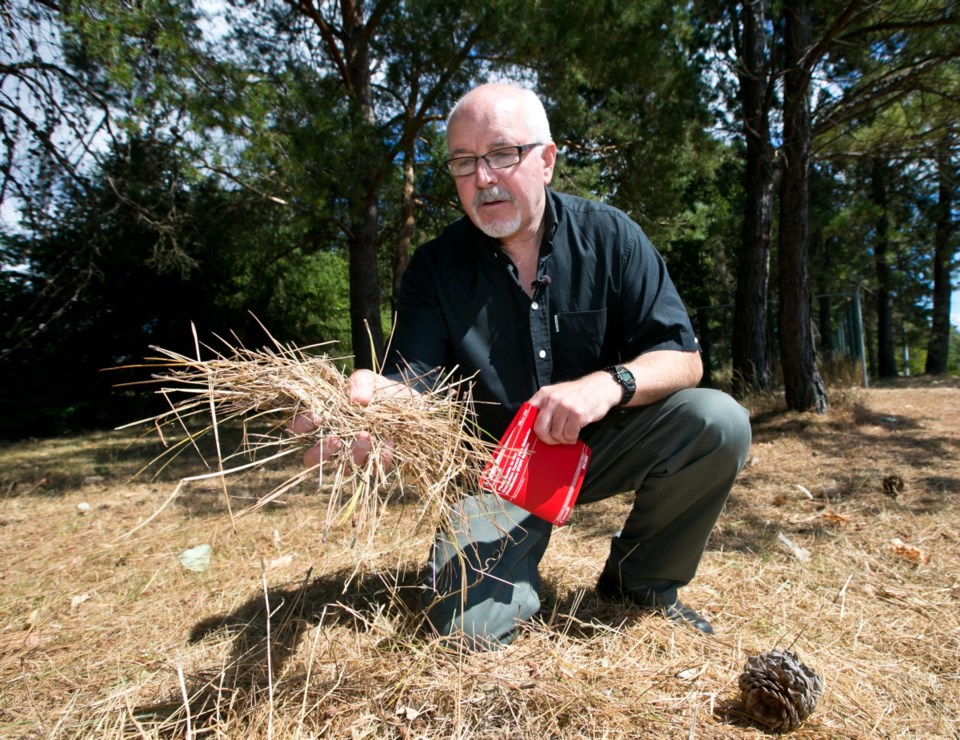As forest fires rage across the province, a group of scientists is working on a model that could predict wildfires up to two weeks before they happen.
Steve Taylor, a research scientist at the Pacific Forestry Centre in Saanich, said the goal is to cut response times by giving emergency planners more notice.
“We won’t be able to say specifically where they will occur, but these episodes where we have a lot of large fire starts — they don’t really come out of nowhere,” Taylor said.
“They’re associated with large-scale weather patterns, longer periods of drying. And that’s somewhat predictable.”
The model, which should be ready in two years, will use the Canadian Forest Service’s historical data dating back to the 1930s, current conditions measured at 1,800 weather stations across Canada, and Environment Canada weather forecasts.
Existing data have been used to determine fire danger on a daily scale by relating weather conditions to moisture content of dead organic matter on the forest floor. It has also been used to predict how quickly a fire will spread, once it occurs.
The next step is to forecast the number of fires and general distribution across the country, Taylor said.
“There is a system to predict the number of fires today in B.C., but it’s sort of an evolutionary process. This is another step along the way. We want to push it to two weeks to take advantage of improvements in weather forecasting and do it on a national scale.”
The model is aimed at provincial and territorial fire management agencies, co-ordinated through the Canadian Inter-agency Forest Fire Centre, based in Winnipeg.
Right now, if a province puts in a request for outside support, it takes about three days to get visiting fire crews organized, transported, briefed and on the ground.
With the model, that process could begin earlier — and it may also be easier to predict when resources could be released again. The needs of one province can also be considered against others, Taylor said. “It’s mostly large fires that use up these resources, so we’re really trying to give decision-makers and planners a bit more of an edge. Rather than just saying, ‘it’s hot and dry,’ what does that mean in terms of the number of fires we can expect?” Taylor said.
The development team includes Taylor and one other Natural Resources Canada scientist at the Pacific Forestry Centre, a Canadian Forest Service scientist based at the University of Toronto and two professors at Western University in London, Ont.
Donna MacPherson, a fire information officer at the Coastal Fire Centre based in Parksville, said the B.C. Wildfire Service already uses predictive information provided by Natural Resources Canada.
“If they have a more scientifically sound resource tool that would help us do our job more efficiently, then of course we would welcome that,” MacPherson said.



